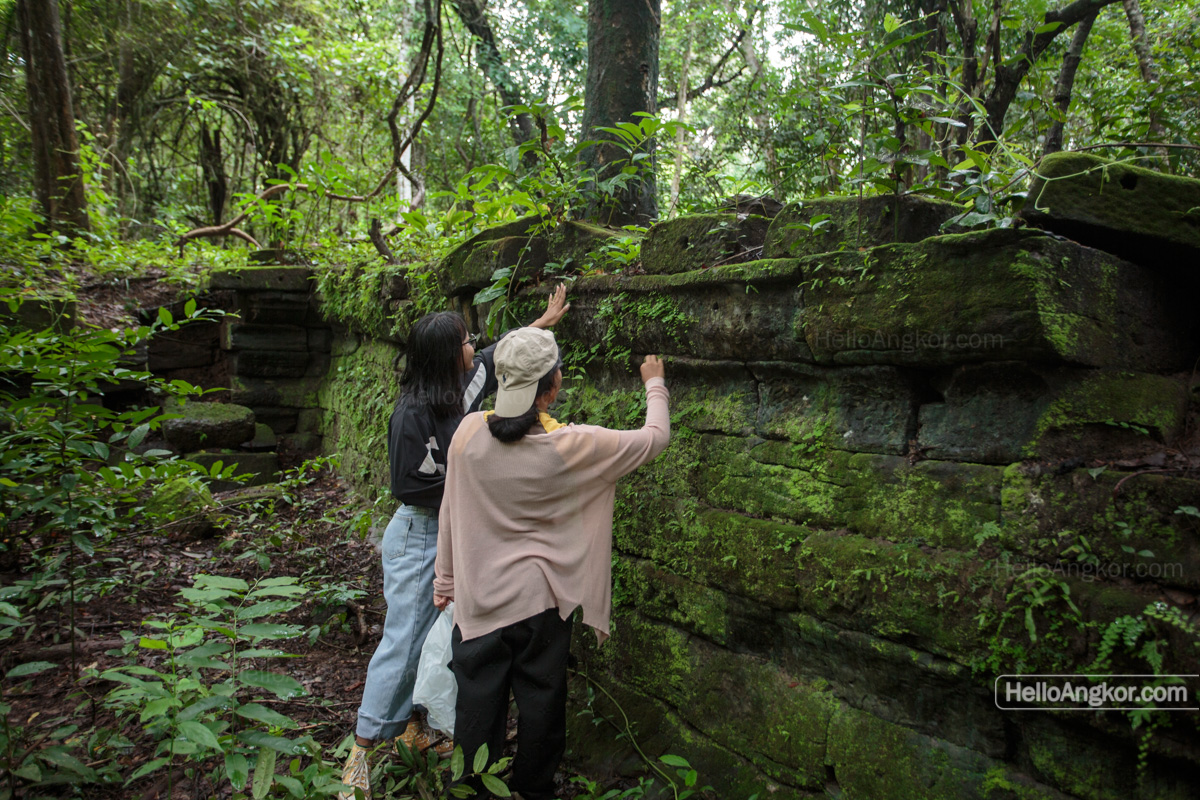- Area: Siem Reap Province > Krong Siem Reab > Sangkat Nokor Thum
- | Type: Ancient Remains & Temples
A large Buddhist Terrace, perhaps the largest in Angkor Thom, featuring a cross-section at its west end and then a lower platform at a meter or so high that extends east for some way. Built from sandstone it features no ornate decoration, from what can be seen at least, just styling lines that are in good condition bar the overgrowth. There also seems to be a small separate construction on its eastern side and blocks here there and everywhere.
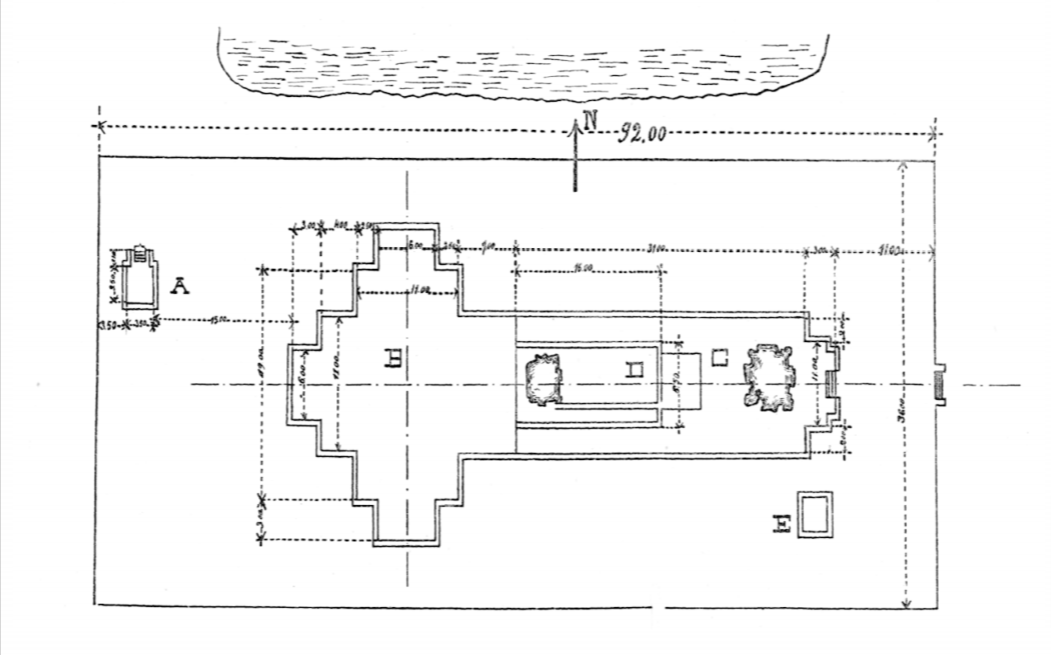
The site layout pictured above is from “Monuments secondaires et terrasses bouddhiques d’Ańkor Thom” Marchal, Henri (1918), in which Marchal wrote of the site, naming it Terrasse 4, and measuring it to be 100m long, and 36m wide. The site was delimited by sema he notes, yet it seems very little was found here in the way statue or otherwise with Marchal also noting the possibility of looting. He also notes the possibility of a Chedi just south of the eastern end where some laterite blocks can be seen.
Presently the whole area is overgrown and not so suitable for visiting.
The Buddhist Terraces, like Terrace #4 are believed to be part of the shift away from temple construction dating this site somewhere between the late 13th and early 17th centuries.
Gallery
January 2021
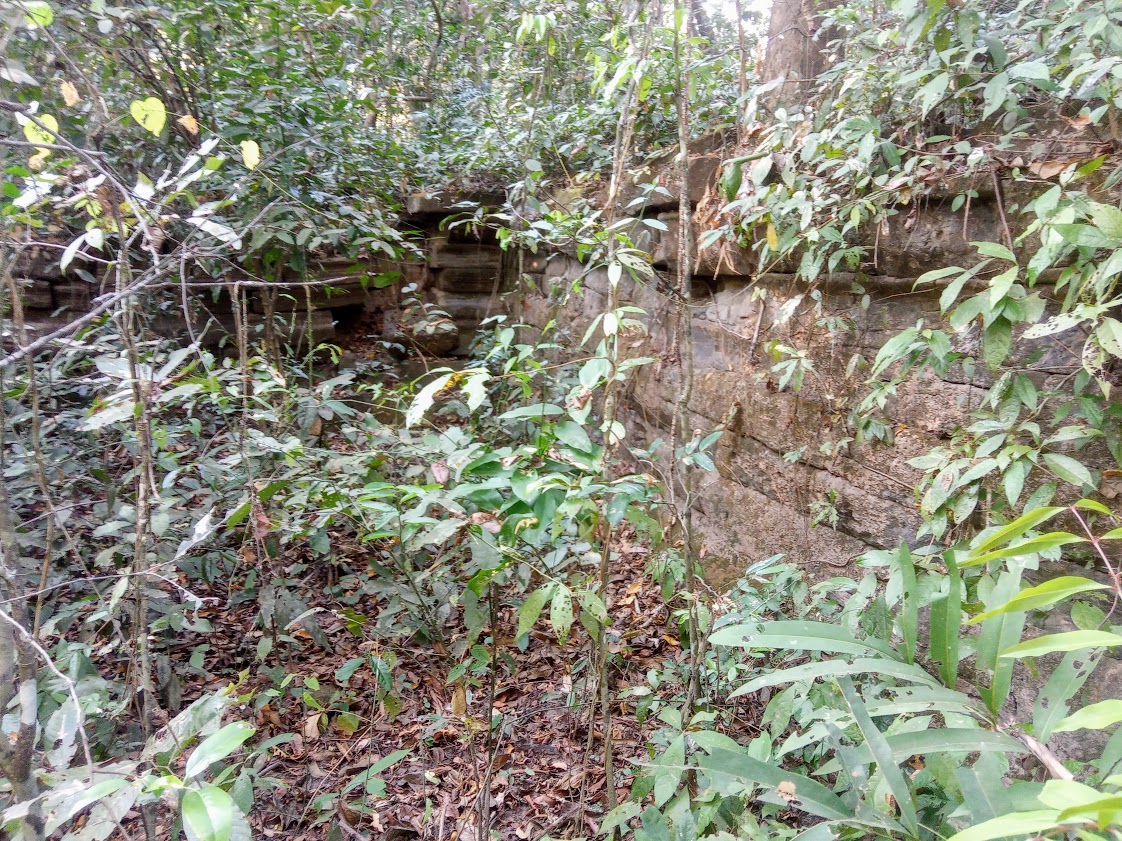


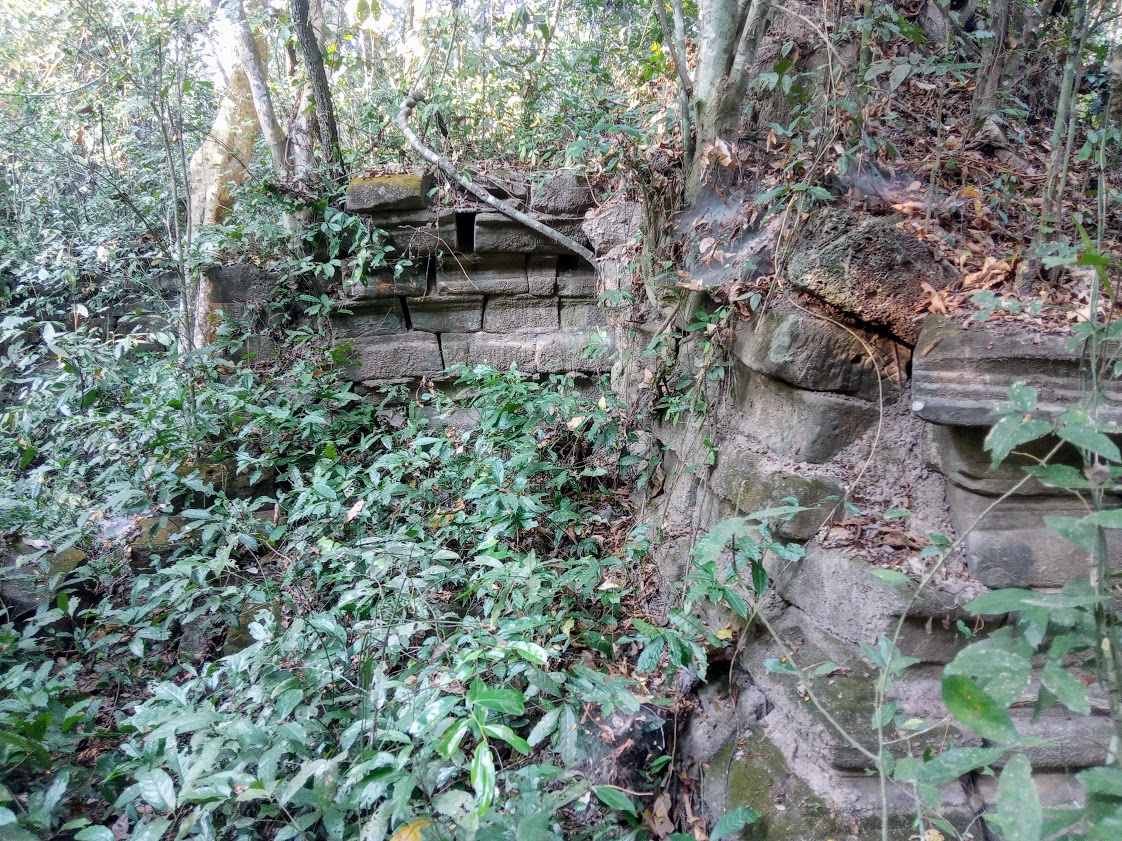


Update 10/2022 – the Buddhist Terraces inside Angkor Thom have been under research for some time by the Angkor Vihara Project/APSARA and many have recently been excavated in part, and some cleared of vegetation, plus the release of research papers. For more, see the update section at Buddhist Terraces of Angkor Thom.




Update 2024 – The site was cleared once again in early 2024 under the Angkor Vihara Project/APSARA. This time extensive research was carried out with ground penetrating radar along with extensive excavations providing deeper insight into the site. The work further revealed a multi-phase and multi-structure design, and that it possibly played a significant role in the area’s Theravada Buddhist history. Moreover, the site holds great significance, both as a religious monument and as a key to understanding broader socio-political processes during its era.
Several artifacts were also uncovered, including fragments of seated Buddhas, Angkorian and very interesting post-Angkorian style Buddha heads, a small Ganesha statue, four-sided diagraphic stele, ceramics, funerary vessels, Chinese celadon jarlets, sandstone sarcophagus fragments, iron crampons, and, masses of roof tiles.
Along with the revelation that the site we see today had multiple stages of development over time as a Buddhist Terrace, it also witnessed multiple phases of use, spanning from the Angkorian period to the post-Angkorian Theravada Buddhist era. Diagnostic material discovered in these layers of the excavation also reveals continual occupation and not only ritual activity in its later stages, but also residential activity likely by monks or devotees.
We had the chance to visit the site to see the deep excavation pit revealing curious molded sandstone blocks now speculated to have been a large standing Buddha. What’s even more amazing, is radar investigation revealing further remnants related to that Buddha deeper down and yet to be excavated.
It’s also quite interesting to understand the process behind the research results, the years of initial groundwork leading to the targetted excavations and the meticulous work of uncovering diagnostic material. Post-excavation, those diagnostic materials are studied further, or analysed as is the case with charcoal samples providing important carbon dating. In the end, bringing us all greater insight into what was once a lesser-known era. Let’s hope that important work continues.
Research results are ongoing with carbon dating results likely to provide a timepoint relative to one of the construction phases of the terrace and perhaps a critical clue into the overall timeline of the Buddhist Terraces within Angkor Thom.
There is a great hope, held by many including myself, that this site will be restored one day and become a functioning Buddhist vihara once again and a feature on the visitor route of Angkor.
The below photos are from August 2024 and the site has mostly returned to nature with few traces of the research work that had been completed there.
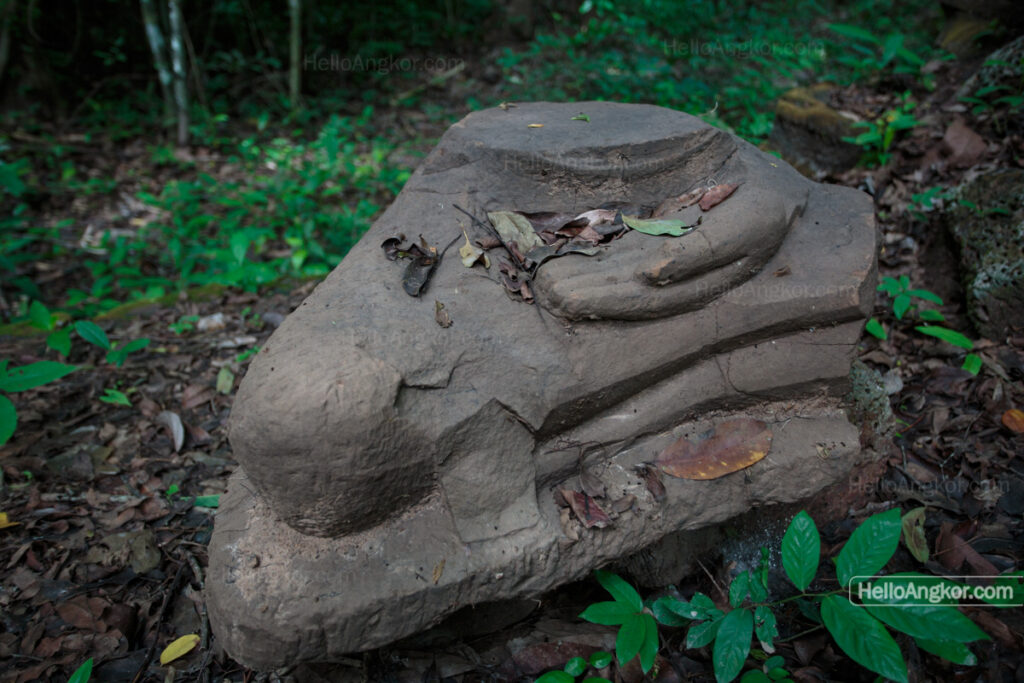
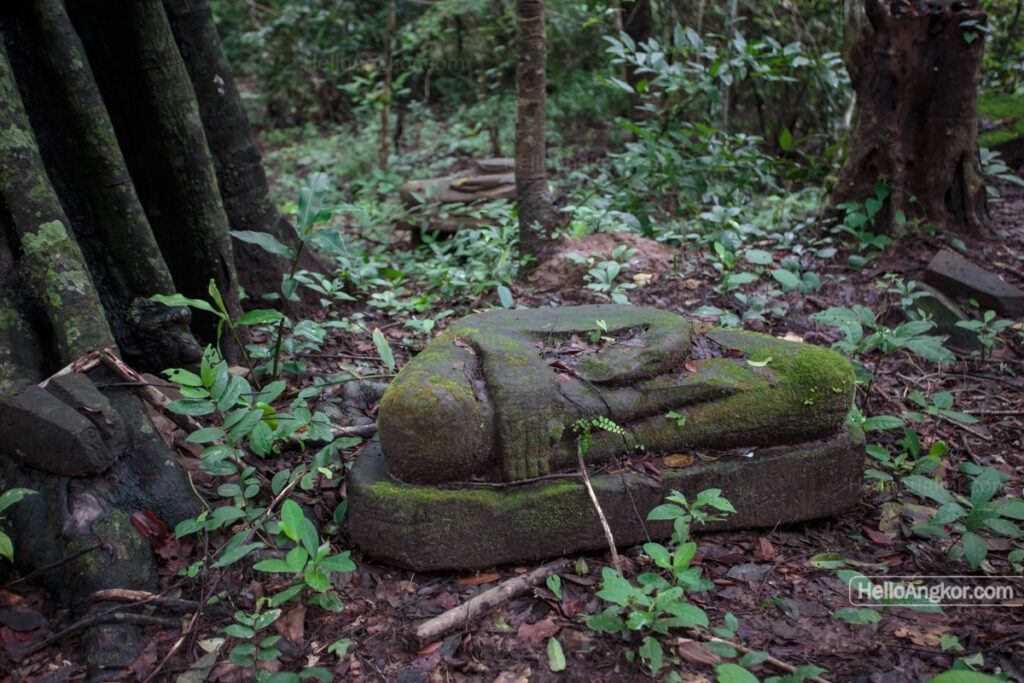

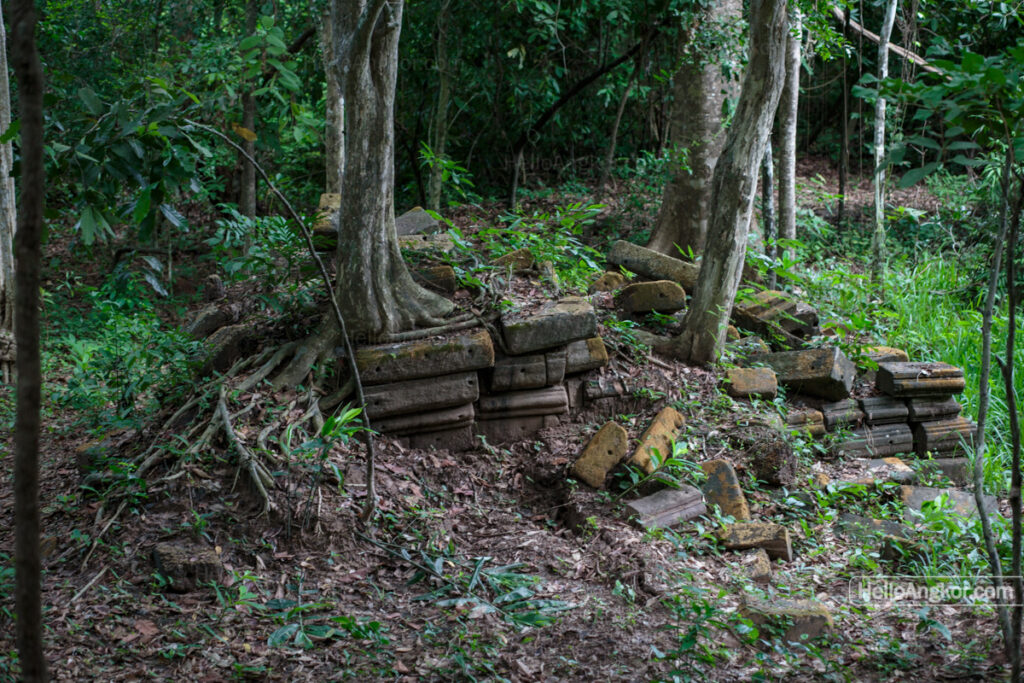

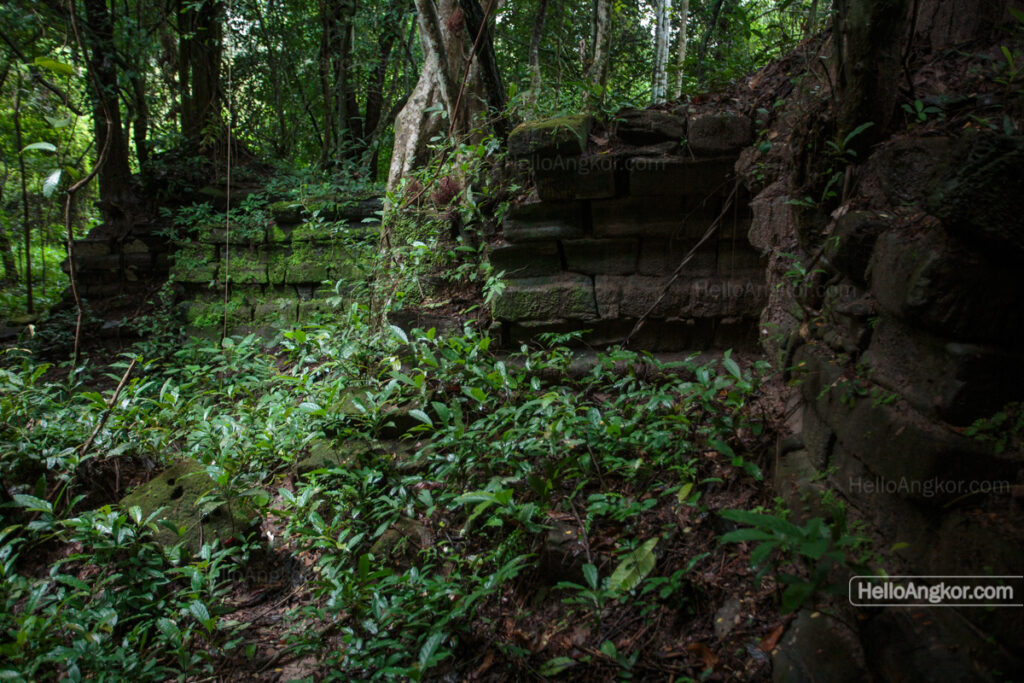

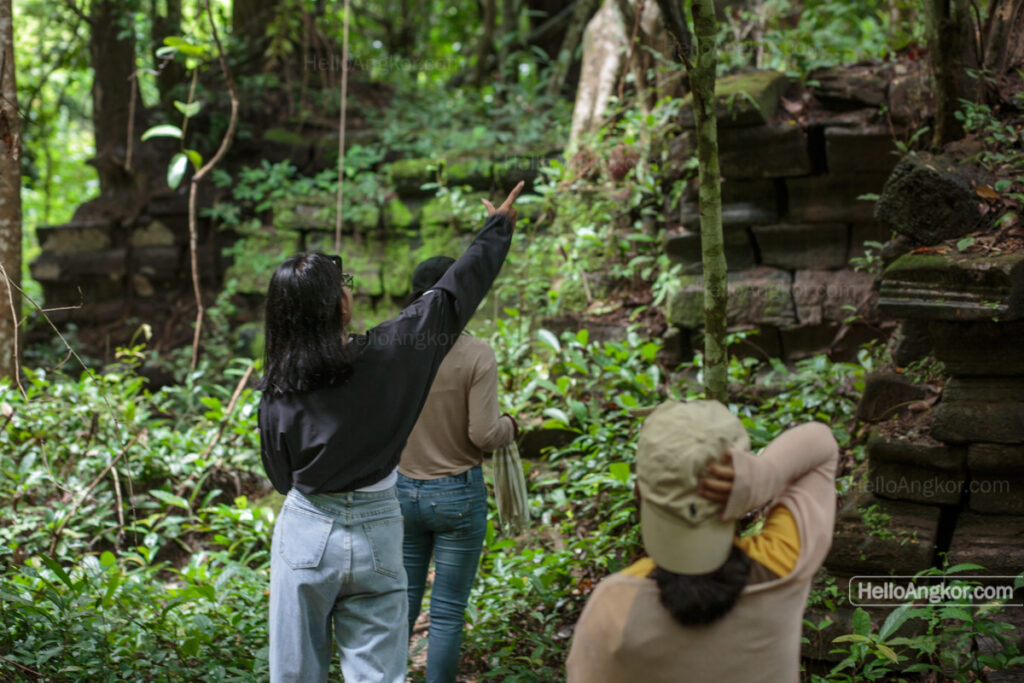
References
- Monuments secondaires et terrasses bouddhiques d’Ańkor Thom, Henri Marchal, 1918
- An Old Ritual Capital, a New Ritual Landscape: Understanding the Transformation of Angkor Thom, Cambodia through the Construction and Placement of Theravāda »Buddhist Terraces«, Dr. Andrew Harris, 2019
- Activity Report: 2024 Field Season February 5th – March 8th, 2024 – Dr. Andrew Harris, Chhay Rachna, Chhun Sambor, Mariko Shimoda, Dr. Francesca Monteith, and Dr. Giles Spence-Morrow, 2024
Map
Site Info
- Site Name: Angkor Thom Terrace #4 Khmer Name: អង្គរធំ
- Reference ID: HA12016 | Last Update: September 15th, 2024
- Tags/Group: Angkor, Angkor Thom, Buddhist Terrace, Temples
- Location: Siem Reap Province > Krong Siem Reab > Sangkat Nokor Thum
- MoCFA ID: 733
- IK Number: 474.05

